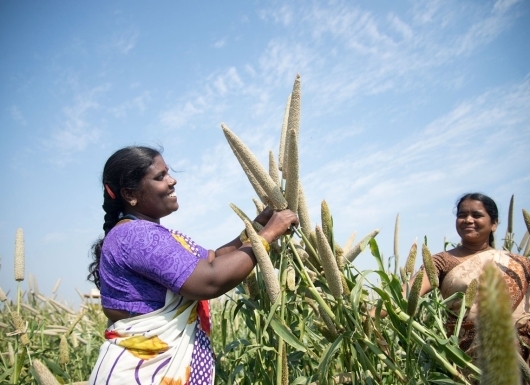Submitter: (ICRISAT)
Livestock contributes significantly to the income of farmers, particularly smallholder households. Globally, in low and middle-income countries (LMICs), livestock contribute to about 25% of agricultural GDP. In India, livestock contribute 14-16 % to the total income. Livestock production, including milk, meat, and eggs, is a major source of income for farmers, with milk production leading the way. The sector also provides nutrition and employment to a large portion of the rural population. The availability of quality fodder round the year is immensely important for farmers across the world. In case of India, the ICAR-Indian Grassland and Fodder Research Institute (IGFRI) has estimated a deficit of 11.24% for green fodder and 23% for dry fodder. This shortage is impacting animal productivity and contributing to rising milk production costs. In India, quality fodder production is a subject of research in almost all State Agricultural Universities as well as selected institutes of Indian Council of Agricultural Research (ICAR). ICRISAT also focuses on the development of quality and multi-cut fodder in pearl millet. Several high yielding hybrids and OPVs of pearl millet have been released by the national system in India and abroad, using ICRISAT Breeding material. These multi-purpose varieties showcase remarkable advantages over local varieties in India.

Despite the opportunities that livestock markets offer, there remain significant challenges to small livestock producers. The levels of basic animal productivity on most farms are typically well below those on commercial farms. In some cases, for example, gaps in beef productivity between small-scale and commercial farms are 130 per cent and as high as 430 per cent in the case of milk production. These gaps are caused by many factors, including inadequate or low-quality fodder and feed. Availability of high yielding fodder crops, especially in the drylands, where soils are severely degraded, can improve the farmers livelihoods. Green/dry forage with high protein and digestibility are needed to enhance the crop-livestock efficiency of farms.
Pearl millet hybrids and OPVs are widely used as a forage crop, particularly in regions with limited water resources. The crop offers high biomass yields and are known for their drought tolerance and ability to thrive in diverse conditions. ICRISAT’s Three-way top-cross hybrids of pearl millet offer an affordable technology for multi-cut high productive fodder. Some of the Three-way hybrids are as high yielding as single cross hybrids. Private seed company, Advanta offers Nutrifeed, a popular multi-cut variety, and various three-way top-cross hybrids to farmers.
ILRI (International Livestock Research Institute) research results have indicated that a 1% increase in stover digestibility in crops can result into increases in milk, meat and draught power outputs ranging from 6-8%.
Like crop production, ICRISAT offer seed and planting material of high yielding and high-quality fodder pearl millet varieties to smallholder farmers in partner countries. Forage cultivars of pearl millet having high protein and digestibility can improve livestock feed efficiency. In pearl millet, bmr trait has been introgressed into many inbred lines, suitable as parents for hybrids. ICRISAT can make early available these germplasms to partner countries.
SK Gupta (Pearl Millet Breeder), Email: Shashikumar.Gupta@icrisat.org